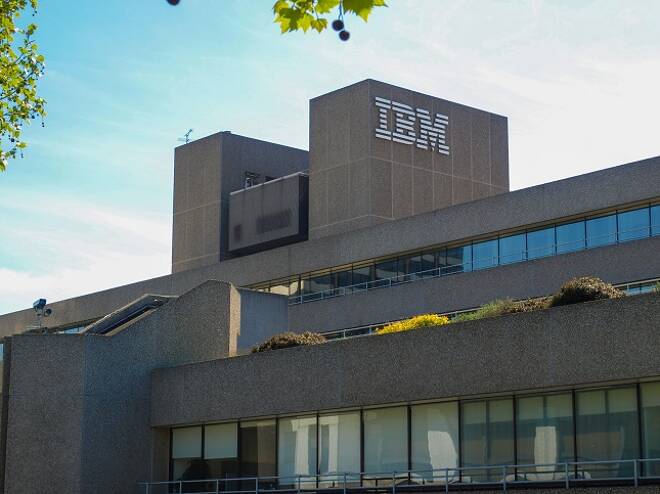Advertisement
Advertisement
IBM Waking Up From the Dead
By:
The company has been on an acquisition binge since October, scooping up six cloud computing and fintech firms.
International Business Machines Corp. (IBM) reports Q4 2020 results after Thursday’s U.S. closing bell, with analysts expecting a profit of $2.05 per-share on $20.57 billion in revenue. If met, earnings-per-share (EPS) will mark a troubling 56% profit decline, compared to the same quarter in 2019. The stock fell 6.5% in October after meeting modest top and bottom line estimates, consistent with the company’s long-term status as a market laggard.
IBM Acquisition Binge Ahead of Spin-Off
However, bullish stars are aligning for strong price action that could catch analysts and traders off-guard. In October, IBM announced the spin-off of its Managed Infrastructure Services (MIS) business into a publicly-traded entity, in a transaction expected to close at the end of 2021. In addition, the company has been on an acquisition binge since the last report, scooping up cloud and fintech firms TruQua Enterprises, Instana, Expertus Technologies, Nordcloud, 7Summits, and Taos Mountain.
The spin-off will segregate slow-growing and legacy segments, allowing core operations to focus on rapidly-growing cloud and artificial intelligence businesses. The new IBM should command a much higher multiple than the old school tech behemoth, marking their most important development in decades. The company just took another step on that path, announcing that Senior VP of Global Markets Martin Schroeter will head the spun-off operation.
Wall Street and Technical Outlook
Wall Street has abandoned IBM in recent years, with just six analysts covering developments. It’s currently rated as a marginal ‘Moderate Buy’, based upon 2 ‘Buy’, 4 ‘Hold’, and 0 ‘Sell’ recommendations. Price targets currently range from a low of $135 to a Street-high $160 while the stock closed Friday’s session nearly $7 below the low target. This depressed placement favors higher prices but rapid gains will take time, given years of skepticism.
The stock topped out in 2013 and entered a bear market, posting lower highs and lower lows into March 2020’s 11-year low. This price action had added to a massive triangle pattern that’s carved two higher lows since 2008. Price is now situated at the dead center of the pattern, which is typical just before a trend move, higher or lower. Given positive catalysts, bulls should have a perfect opportunity to break the descending trendline, signaling the first uptrend since 2013.
For a look at all of today’s economic events, check out our economic calendar.
Disclosure: the author held no positions in aforementioned securities at the time of publication.
About the Author
Alan Farleyauthor
Alan Farley is the best-selling author of ‘The Master Swing Trader’ and market professional since the 1990s, with expertise in balance sheets, technical analysis, price action (tape reading), and broker performance.
Did you find this article useful?
Latest news and analysis
Advertisement
